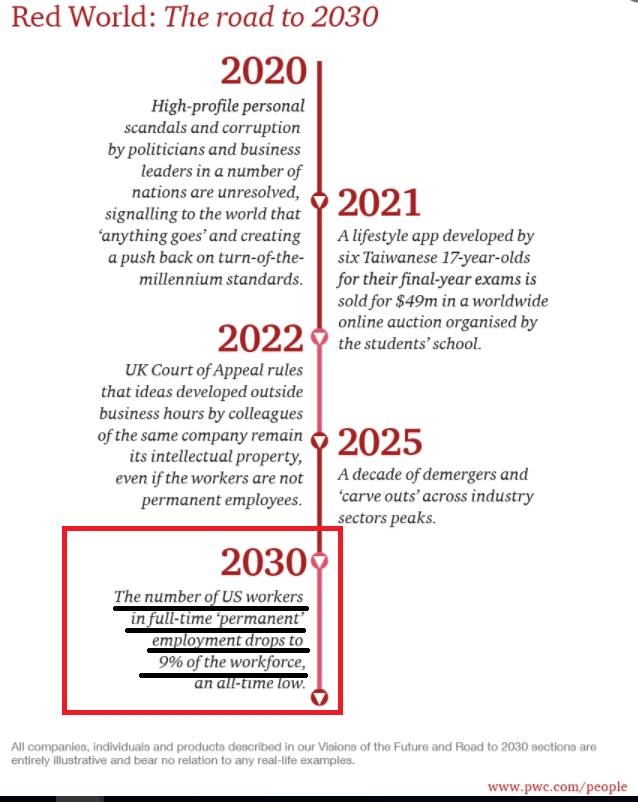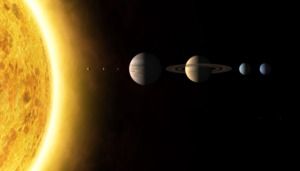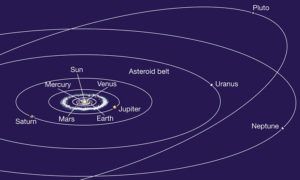
Category: lifeboat – Page 6


Looking Back at 2017: A Year in Rejuvenation Biotechnology
The end of the year is approaching, and as we prepare for the celebrations for the new year, what could be better than sitting down with a warm drink and recapping 2017 in the world of rejuvenation biotechnology?
Winter kick-off
This year has been pretty intense, with a lot going on both at LEAF and in the rest of the community. January saw the launch of the LEAF website, shortly followed by both the Lifeboat Foundation and Trust me – I’m a biologist partnering with us. Given that it’s been only a year, we’re amazed at how enthusiastic and supportive the community has been—and how fast it has grown, with nearly 30,000 Facebook followers late in December! We’re also very grateful to our friends at Fight Aging! for their encouragement, support, and appreciation for our work, including honoring us by featuring it on their website!
Dr. Jose Luis Cordeiro – Supporting the development of cryonics and rejuvenation biotechnology
Interview with Dr. Jose Luis Cordeiro at the International Longevity and Cryopreservation Summit in Madrid.
During the recent International Longevity and Cryopreservation Summit in Madrid, LEAF Board member Elena Milova had the opportunity to speak with Dr. Jose Luis Cordeiro new fellow of the World Academy of Art and Science (WAAS) and long-term proponent of innovation technologies in many fields. Jose shared his vision on how public perception of rejuvenation technologies is changing over time and what are the main outcomes of the groundbreaking show he and his team managed to organize.
Dr. Cordeiro got his B.Sc. and M.Sc. degrees in Mechanical Engineering at the Massachusetts Institute of Technology (MIT) in Cambridge, USA, with a minor in Economics and Languages. He is President Emeritus of the Future World Society (Venezuela) and since its foundation about two decades ago Jose managed to become an influential futurist. He is a founding faculty at NASA created Singularity University in Silicon Valley. The goal of the research centre is to tackle global problems such as health, nutrition, poverty and education using the medium of technology. He is also on the board of directors for the Lifeboat Foundation. Jose is part of Fundacion VidaPlus, promoting rejuvenation technologies as well as cryonics, as he believes that people who are too old to make use of the emerging biotechnologies should be granted a plan B in form of cryopreservation. Apart from traveling all over the world to promote innovative ideas in his inspiring talks, Jose has written more than 10 books and co-written over 20 more in five languages, including sections of the State of the Future by the Millennium Project. His extensive associations and achievements are far too numerous to list in this short article, and we invite you to read more about Jose here and also watch his awesome TEDx talk here.

Solar System Map: Surprisingly deceptive
What’s wrong with this illustration of the planets in our solar system? »
For one thing, it suggests that the planets line up for photos on the same solar ray, just like baby ducks in a row. That’s a pretty rare occurrence—perhaps once in several billion years. In fact, Pluto doesn’t even orbit on the same plane as the planets. Its orbit is tilted 17 degrees.  So, forget it lining up with anything, except on rare occasions, when it crosses the equatorial plane. On that day, you might get it to line up with one or two planets.
So, forget it lining up with anything, except on rare occasions, when it crosses the equatorial plane. On that day, you might get it to line up with one or two planets.
But what about scale? Space is so vast. Perhaps our solar system looks like this ↓
No such luck! Stars and planets do not fill a significant volume of the void. They are lonely specs in the great enveloping cosmic dark.*  Space is mostly filled with—well—space! Lots and lots of it. In fact, if Pluto and our own moon were represented by just a single pixel on your computer screen, you wouldn’t see anything around it. Even if you daisy chain a few hundred computer screens, you will not discern the outer planets. They are just too far away.
Space is mostly filled with—well—space! Lots and lots of it. In fact, if Pluto and our own moon were represented by just a single pixel on your computer screen, you wouldn’t see anything around it. Even if you daisy chain a few hundred computer screens, you will not discern the outer planets. They are just too far away.
Josh Worth has created an interactive map of our solar system. For convenience, it also assumes that planets are lined up like ducks. But the relative sizes and distance between planets are accurate. Prepare to change your view of the cosmos…

Just swipe your finger from the right edge of the screen to move away from the sun. Despite a fascinating experience (and many cute, provocative Easter eggs hidden between the planets), few readers swipe all the way out to Pluto and the author credits. On my high-resolution monitor, it requires more than a thousand swipes. Imagine if the Moon had been more than 1 pixel…It would take a long, long time! I would rather go out to dinner and a movie. But I urge you to travel at least to Jupiter. At 1/7 of the trip to Pluto, it should take less than 5 minutes.
On this scale, you won’t see the 1½ or 2 million asteroids between Mars and Jupiter. They aren’t large enough to merit a pixel. As Josh states, “Most space charts leave out the most significant part – all the space.” (an Easter egg at 1.12 billion km on the map).
* I borrowed this phrase from my former Cornell professor, Carl Sagan. He uses it in Pale Blue Dot [timestamp 2:14.]. This video tribute became a touchstone in my life; even more than having Sagan as a professor and mentor.
If you view it, be sure to also view Consider Again, Sagan’s follow-up in the video below. It is a thought-provoking observation of human-chauvinism throughout history—even among ancient Greeks. Carl isn’t the first atheist, of course. But he is eloquent in describing mankind’s ego trip: The delusion of a privileged place in the universe, or the religious depiction of God and his relationship with our species.
Related:
- Carl Sagan Pale Blue Dot, a most impactful short video
- Consider Again the Pale Blue Dot, the arrogance of man throughout history
- Scale of the Universe: Powers of 10 (Charles & Ray Eames)
- Learn more about Charles and Ray Eames at Snore & Guzzle
- Our Universe is Finely Tuned for Life—Why?
Credit: ▪ Josh Worth and Sachin Gadhave who offers an illustrative answer at Quora.com
Philip Raymond co-chairs Crypsa & Bitcoin Event, columnist & board member at Lifeboat, editor
at WildDuck and will deliver the keynote address at Digital Currency Summit in Johannesburg.
$5,000 for your dream project
The power of somebody believing in you and your ideas is unbelievable. It gives me exceptional strength. I will wake up 6am and crash 1am, working relentlessly in between. Just recently, the mere fact of somebody becoming a PumpkinDB sponsor gave me a lot of confidence in our success and continuing inspiration to dedicate big chunks of my spare time to this work.
In the grand scheme of things, the amount of money the project receives so far is rather insignificant, it just covers some of our associated expenses. So why is it that important?
Well, words are cheap. Many people said they like what we are working on, but the shelf life of the inspiration coming from this kind of feedback is rather short. Having somebody continuously use your work is the best type of validation.
But in the absence of something immediately useful (as it is often the case with any new, non-trivial project), there are two things that rock: contributions (as in “sweat” or “pull requests”) and money. Both time and money are painful to part with, so when somebody parts with either, you know you’re onto something.
About a month ago I read Nadia Eghbal’s post where she was offering a few $5,000 grants, with no strings attached. Since then, I was obsessed with this idea. The basic idea is beautiful in its simplicity (simplified & paraphrased):
You have a project that you really care about, but funding isn’t readily available for it. If I really like your project, I will give you US$5,000 to pursue it. No strings attached.
The moment I finished reading her post, I knew I wanted to do something very, very similar. I know I can invest $5,000 into my own project, but the idea of being able to give the power of scarcely available validation to somebody else is overwhelmingly more exciting. Thank you, Nadia.
So, here it is: I am offering a $5,000 grant to one project of my choice. No strings attached.
You can apply here. Please note that applications are due by June 1, 2017 12am PST and I am expecting to make a decision on which project to fund during the month of June (2–4 weeks) and be ready to send the first installment some time around July 1, 2017
Questions & Answers
What kind of project am I going to fund?
While I am obviously very inclined to fund an open source software project (that’s where my expertise and passion is, after all), I am explicitly using this offer as an opportunity to learn more about other areas, and if there’s something that will really excite me, I will fund it.
It is important for me to learn why you’re doing this project and why do you think it’s important, so please take your time to answer this question in the application form.
Projects should have a rough scope and a reasonable timeline. Given the amount of money I am providing, it should rather be short (few months or to a year).
If nothing particularly interesting, or something I can relate to, will come my way (though I hope this will not happen!), I reserve a right to choose no project and fund nothing.
Can anybody apply?
As long as I can transfer the money to you in a reasonable and legal way (PayPal, bank transfer, Bitcoin, etc.), there are no restrictions. You can be a citizen of any country, or stateless. Any gender. Any age. Any way you’re wired. Any profession. Any system of beliefs. Anybody.
Can multiple projects be submitted?
Yes, please submit them as separate applications. That said, the less projects you have, the more I will be inclined to believe in your dedication to those.
What does “no strings attached” mean?
You don’t need to pay the money back. I will send you 50% of the amount in the beginning of the project. The rest will come roughly half way through the project, at which point I will check in with you to see how things are going. Upon completion, I’d like to learn how did the project go overall. You can contact me during or after the project if you feel like sharing any updates, thoughts (or questions) with me.
Other questions
Leave a comment here and I’ll do my best to address it. If you want to contact me privately, please email me at [email protected]

Why Silicon Valley Can’t “Disruptively” Vote Its Way To Digital Immortality
You’ve probably heard about billionaires’ Plan B for when the end of the world comes, much of it centering around property in New Zealand. It’s not exactly a bad plan as far as doomsday prepping goes; buy a nice bunker somewhere in Middle Earth and wait out the chaos in luxury on one of two fairly isolated islands. Now, you may have noticed that front and center for such planning is Silicon Valley billionaire and Trump backer Peter Thiel of the pay-to-sue-Gawker-into-oblivion fame to the public at large, and ultra-libertarian venture capitalist with some crazy ideas about the future to the techies who know him. His backing of seasteading and support for Trump just because he got bored with Obama, are but a warmup to what he really has in mind for the future: immortality as a sentient super-AI.
No, you didn’t read that wrong, and no, this is not hyperbole. In fact, yours truly was once invited to an event where Thiel was a featured speaker after a rather public spat with the president of the Singularity Institute. I did not take up the offer because I had to be in class to learn how to build actual AI systems. And for full disclosure, I was invited to join an advisory board for a group of futurists called The Lifeboat Foundation, but like Groucho Marx, I didn’t want to be involved in a club that would accept someone like me as a member, much less as an advisor based on little more than me being a grad student at the time. So Thiel’s involvement with a group of futurists and an occasional computer scientist who thinks we’re on the verge of something a lot like the plot of Transcendence, is extremely well known in tech.
In fact, the belief that at some point, artificial intelligence and the march of technology will create a singularity that will alter humanity forever, has an alarming number of adherents in Silicon Valley. The face of the Singularity today, Ray Kurzweil, works at Google and runs Singularity University where it’s preached thanks to a multimillion commitment from his employer. And the fact that this belief is so popular in the world’s biggest tech hub isn’t all that surprising if we consider its followers. They’re told that their code and the technology they’re developing is changing the world, or they’re devoted followers of popular science news ready for the incredible future promised to us by the glossy magazines and sci-fi movies to arrive. To be told that by 2035 or 2045 we may become immortal through technology is appealing to say the least, and empowering for those who think they can help.

Trust me, I’m a “Biologist” joins forces with LEAF
Trust me, I’m a “Biologist” joins the Lifespan Network and joins Lifeboat Foundation in our cause.
We are pleased to announce Trust me, I’m a “Biologist” has joined the Lifespan Network bigsmile

The Lifeboat Foundation and LEAF join Forces
I figured they would post it themselves but I got too excited and decided to spread it around.
The Lifeboat Foundation is a nonprofit organization devoted to encouraging the promotion and advancement of science while helping develop strategies to survive existential risks and the possible abuse of technology. They are interested in biotechnology, nanotechnology, robotics and AI and fostering the safe and responsible use of these powerful new technologies. The Life Preserver program is aligned with our mission to promote and develop rejuvenation biotechnology capable of combating age-related diseases.
We believe that a bright future awaits mankind and support the ethical and safe use of new medical technologies being developed today, thus we consider the goals of the Lifeboat Foundation to be compatible with ours and are pleased to move forward with them in official collaboration. As part of our commitment to the ethical progress of medical science LEAF promotes scientific research and learning via our crowdfunding website Lifespan.io and our educational hub at the LEAF website. A number of LEAF board members are already on the Scientific Advisory board for the Lifeboat Foundation and we look forward to working closely with them in the coming year.
With the first rejuvenation biotechnologies now arriving, such as Unity Biotechnology senolytic therapies that directly address one of the causes of aging entering human clinical trials soon, it is a very exciting time for medical science.
What Is YawLife?
The non-profits & charities supported will include the lifeboat foundation smile
Find out in a minute.